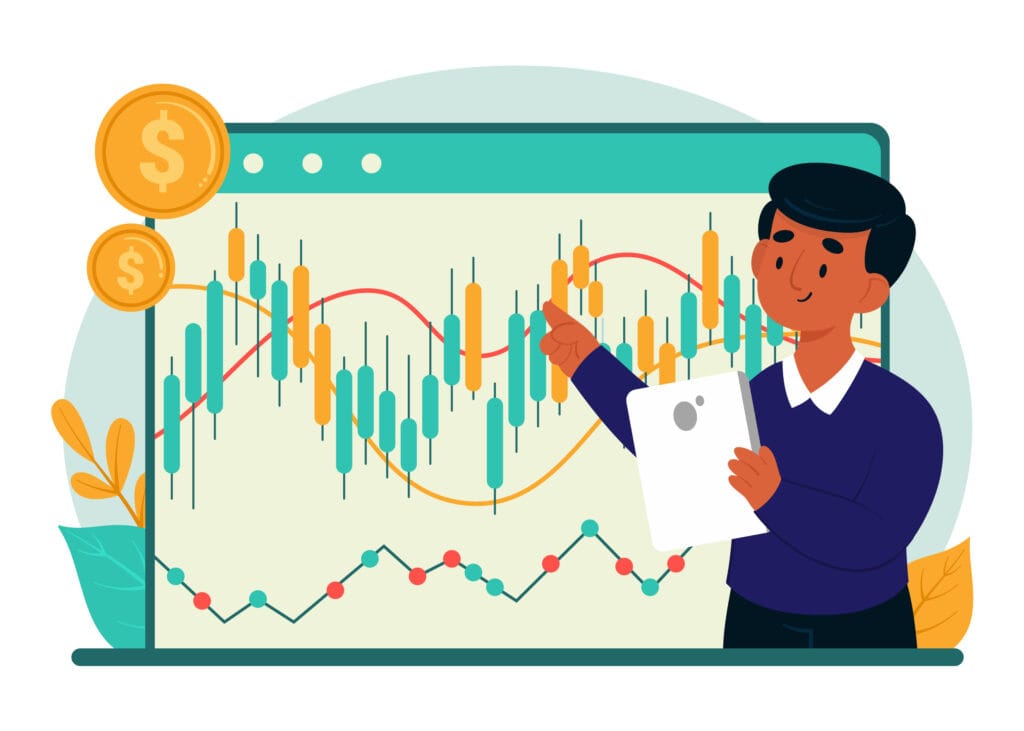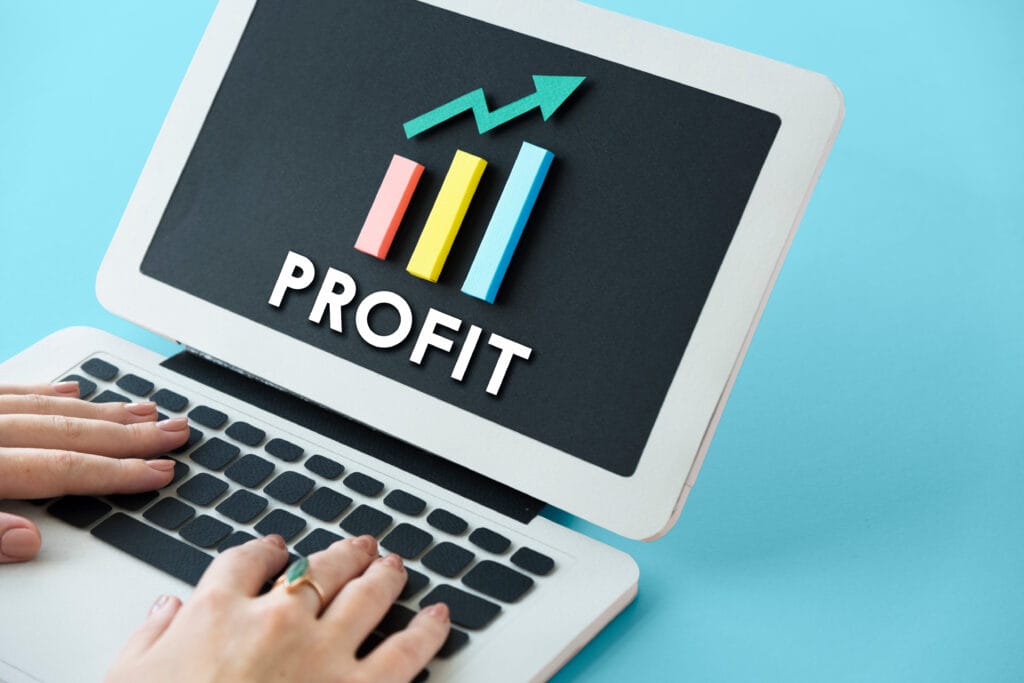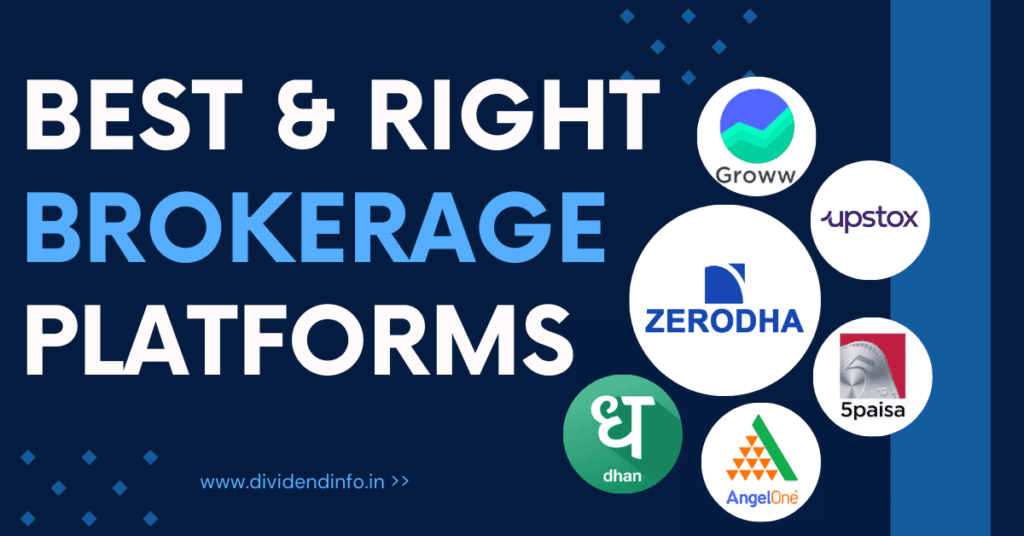Introduction
Are you looking for a reliable way to earn a passive income without constantly watching the stock market’s every fluctuation? Then, welcome to the world of dividend investing—a strategy that rewards patience and provides a steady cash flow.
Dividend investing has become an even more appealing path for beginners looking for stable, long-term returns. Imagine getting paid simply for holding quality stocks! That’s the magic of dividend investing: your initial research and consistent contributions can lay the foundation for a self-sustaining source of income.
In this article, we’ll show you how to identify the best dividend stocks, structure your portfolio for both growth and safety, and sidestep costly pitfalls—ensuring you remain on track toward financial independence. If the idea of building wealth while generating ongoing payouts excites you, keep reading to find the tools, tips, and tactics you need to get started.
Table of Contents
Why Dividend Investing Still Matters in 2025?
Before moving forward, let me answer your question that may arise: What is dividend investing? Dividend investing is a strategy where you buy shares of companies that regularly pay out a portion of their profits—called dividends—to shareholders. By focusing on dividend-paying stocks, you can earn a consistent income in addition to any long-term gains from the stock’s price growth.
In 2025, evolving economic conditions, such as fluctuating interest rates and ongoing market volatility, present compelling reasons to explore dividend investing. As major companies focus more on shareholder returns, strong dividend payouts have become a central part of their growth strategy.
Additionally, global shifts—like technology advancements and emerging markets—are expanding opportunities for steady cash flow. These trends, coupled with the potential for capital appreciation, make dividend investing particularly appealing now, offering investors a dual advantage: regular income and the chance for long-term gains.
Who Should Consider Dividend Investing?
Dividend investing is mainly attractive for those who are new to the stock market, as it provides the opportunity to learn investing basics while collecting consistent returns. Long-term wealth builders also benefit since reinvesting dividends can immensely boost overall gains through compounding. And for anyone seeking a steady stream of passive income—such as retirees or individuals aiming for financial independence—dividend-paying stocks can deliver reliable cash flow without requiring constant portfolio adjustments.
Understanding the Basics of Dividend Investing
What Are Dividends?
A dividend is a portion of a company’s earnings that it pays out to its shareholders, usually on a regular intervals. This distribution serves as a reward for investing in the company and signals the company’s good financial health and profitability.

Dividend payout ratios and dividend yield are important metrics that one must consider when choosing or planning to buy dividend-paying stocks. The payout ratio reveals the percentage of a company’s profits given back to shareholders, offering insights into how well those dividends might hold up over time.
Meanwhile, the dividend yield—calculated by dividing the annual dividend by the share price—shows the immediate return an investor can expect. By examining both figures, you can measure a company’s commitment to shareholder returns and the sustainability of its dividend policy.
Also Read
Types of dividend stocks?
Dividend Aristocrats
Dividend Aristocrats are companies that have increased their dividend payouts consistently over many years—often for decades. This track record of reliable dividend growth typically signals a stable business model, strong cash flow, and a management team committed to rewarding shareholders.
High-Yield vs. Steady-Growth Dividend Stocks

High-yield dividend stocks stand out due to their larger payouts in relation to share price, making them appealing to those seeking immediate income. However, higher yields can come with elevated risks if the underlying company struggles to maintain its earnings. Meanwhile, steady-growth dividend stocks might offer smaller but consistently rising payouts, which can lead to substantial long-term returns when reinvested.
REITs and Other High-Dividend Alternatives
Real Estate Investment Trusts (REITs) often provide higher-than-average dividend yields because they’re legally required to distribute most of their taxable earnings to shareholders. REITs earn revenue from property rentals, so they can offer stable, if not growing, distributions over time. Other alternatives, such as Master Limited Partnerships (MLPs) or Business Development Companies (BDCs), also tend to feature higher-than-normal dividend payouts, though investors should evaluate each entity’s financial health and tax implications before diving in.
Setting Up Your Dividend Investment Portfolio
Determining Your Dividend Investment Goals
Before you begin investing in dividend stocks, start by identifying how much passive income you’d like to earn—whether it’s enough to cover monthly expenses, supplement retirement savings, or simply accelerate your wealth-building goals. This target amount will make it easy to shape the types of stocks you choose, as well as the overall size and composition of your portfolio.

Additionally, decide if your priority is quick returns or building lasting wealth. A short-term focus might involve selecting stocks with high current yields for immediate cash flow, whereas a long-term focus highlights companies with solid growth potential, aiming to multiply returns over time through reinvestment and compounding.
How to Do Asset Allocation and Diversification While Dividend Investing?
When building a dividend-focused portfolio, it’s important to balance your holdings across various asset classes—like stocks, bonds, and even cash—so you’re not overly reliant on one source of returns.
For example, bonds can help stabilize a portfolio when stock prices dip, while dividend equities can provide consistent income regardless of market swings.
Diversifying across different industries and regions further reduces your risk exposure; if one sector experiences a downturn or if global events impact specific markets, other areas of your portfolio may remain resilient. This blend of broad allocation and smart sector diversification creates a more stable foundation for long-term dividend growth.
Choosing the Right Brokerage Platform
Choosing the right brokerage platform can significantly impact your dividend investing success. Commission fees can quickly eat into your returns, especially if you plan on making frequent stock purchases.

Look for platforms with low or zero commission options like Zerodah and check if they offer dividend reinvestment plans (DRIPs), which automatically redirect your dividends toward buying additional shares.
Online brokers like Groww often provide user-friendly dashboards and in-depth research tools, making them ideal for beginners seeking a hands-on approach.
In contrast, traditional brokers may offer personalized advice and one-on-one support but often come with higher costs. Balancing convenience, fees, and the services you value most will help you select the best fit for your investing goals.
What are the Criteria for Selecting a Good Dividend Stock?
Dividend Yield vs. Dividend Growth
Selecting high-yield stocks can give you a more substantial stream of income right away—an appealing choice if you want immediate cash flow. However, these companies may not consistently raise their dividends, limiting your potential for income growth over time.
On the other hand, stocks with a focus on dividend growth might offer a lower initial yield but reward patient investors by increasing their payouts year after year.
For example, you could purchase a high-yield energy stock yielding 7% annually right now, but if its dividend remains flat or is at risk of cuts, you won’t see your income keep pace with inflation. Conversely, a tech company starting at a modest 2% yield could steadily increase payouts to 4% or more over the next decade, fueling compounding returns for long-term holders.
| Point of Comparison | High Dividend Yield | Dividend Growth |
|---|---|---|
| Initial income | Provides substantial income up front. | Usually modest at the start or initial days. |
| Dividend Increases | Likely to rise consistently over time. | Potentially higher if the yield is unsustainably high. |
| Risk Level | Often lower, given strong underlying fundamentals. | Often lower, given strong underlying fundementals. |
| Suitability | Good for investors looking for immediate cash flow. | Good for long-term investors focusing on compounding gains. |
Payout Ratio and Company Fundamentals
When evaluating a stock’s dividend sustainability, the payout ratio is a main indicator. It shows the percentage of a company’s net income that’s paid out to shareholders, so a moderate ratio typically signals that the dividends are more likely to continue or even grow.
In addition, stable earnings, low debt, and a robust business model can support reliable dividend payments over the long period. A solid revenue stream and prudent management of liabilities help ensure that any market downturns or unexpected expenses don’t erode the company’s ability to meet dividend obligations.
Dividend Aristocrats and Champions
Dividend Aristocrats and Champions are companies that have consistently raised their dividends for decades—demonstrating strong financial health, stable revenue streams, and effective management.
This level of consistency often indicates a business model that can weather economic cycles, making these stocks a reliable component of many dividend portfolios. Examples of well-known Dividend Aristocrats include Johnson & Johnson, The Coca-Cola Company, 3M, and Procter & Gamble, each with a track record of rewarding shareholders through regular dividend increases over the long term.
Best Practices for Managing Your Dividend Portfolio
Reinvesting Dividends (DRIP) and What are its Benifits?
Dividend Reinvestment Plans (DRIPs) automatically funnel your dividend payouts back into purchasing additional shares of the same stock, allowing you to build more equity without manually reinvesting.
Over time, this process harnesses the power of compounding—each new share you buy generates more dividends, which then buy even more shares. This virtuous cycle often leads to faster portfolio growth, especially for investors aiming to hold for the long run.

While automatic DRIPs make this process seamless, you may consider holding dividends as cash if you plan to diversify into other stocks, need the income for personal expenses, or suspect the stock’s outlook has changed.
How to Monitor Your Holdings?
Staying informed about your investments is important for maintaining a healthy dividend portfolio. By regularly reviewing quarterly reports and tuning in to earnings calls, you can track a company’s financial performance and stay updated on any material changes or dividend announcements.
Keep an eye on metrics such as revenue growth, profit margins, and debt levels, as these can signal whether the company’s dividends remain sustainable. (To keep track of these, you can use free tools like Screener.in) If you notice consistent drops in performance, dividend cuts, or negative shifts in company strategy, it may be time to sell. Otherwise, long-term holding is often the best approach, allowing you to benefit from compounding and continued dividend payments over time.
Potential Risks and Common Pitfalls
Chasing High Yields
Don’t make the decision to buy any stocks blindly by just looking at their dividend amount. A company offering a yield far above industry norms could be facing financial headwinds, which might lead to dividend cuts—or even suspensions—down the line.
Chasing exceptionally high dividend yields can seem like a shortcut to instant income, but it often carries greater risks.
Few red flags include a payout ratio that appears unsustainable, declining earnings over several quarters, or an overreliance on debt to support dividend payments. These signs may indicate that the business model isn’t strong enough to sustain high payouts and, therefore, might not provide the steady cash flow that dividend investors seek.
Over-concentration in a Single Sector
Over-concentrating your portfolio in a single industry—such as energy or utilities—can make you vulnerable to sector-specific downturns, regulatory changes, or shifts in consumer behavior.
For example, If you only keep on investing in one sector (let’s say the energy sector here) if there comes a major change in the energy sector then all your stocks fall deep, and your portfolio may turn red.
By diversifying your investments across various sectors like technology, healthcare, consumer goods, and more, you balance out these risks. That way, a slump in one industry is less likely to derail your overall portfolio performance.
Market Volatility
Market volatility can test the strength of your dividend portfolio, especially during economic downturns when companies face declining revenues or cash flow. In tough times, some businesses may reduce or suspend dividends to preserve capital, which can directly impact your passive income.

To safeguard your investments, consider investing in companies with strong balance sheets, diversified revenue streams, and a history of navigating economic challenges. Maintaining an adequate cash reserve or allocating part of your portfolio to more stable assets—like bonds or defensive stocks—can also help smooth out losses when the broader market experiences turbulence.
Future Outlook: Dividend Investing in 2025 and Beyond
Emerging Sectors and Dividend Opportunities
Looking beyond traditional dividend payers such as consumer staples and utilities, emerging sectors like technology, healthcare, and ESG-focused companies are showing strong potential for dividend growth. Tech firms increasingly generate strong profits and hold substantial cash reserves, enabling them to reward shareholders with rising dividends.
In healthcare, advancements in medical research and an aging global population support a steady demand for services, fueling both revenue and dividend sustainability. Meanwhile, ESG-focused businesses—those prioritizing environmental, social, and governance standards—are gaining traction and investor support, often resulting in reliable cash flow that can drive future dividend increases. By proactively exploring these growth industries, dividend investors can tap into promising opportunities and diversify their portfolios for the long run.
Global Markets and Currency Considerations
Venturing beyond domestic markets can unlock access to a broader range of dividend-paying companies, potentially boosting both diversification and returns. However, international investments also carry unique risks. Differences in regulatory environments, political climates, and economic stability can affect a company’s ability to maintain or grow dividends.
Additionally, currency fluctuations can either amplify or diminish your returns—when the foreign currency strengthens against your home currency, you might see higher dividend payments once converted, but if it weakens, those gains can quickly erode. Balancing these opportunities and risks is essential for a well-rounded, globally diversified dividend portfolio.
Adapting Strategies to Economic Shifts
Adapting your dividend strategy to the current economic landscape involves staying informed about factors like interest rates, inflation, and major shifts in consumer or business behavior. When interest rates rise, companies with high debt costs may reduce dividend payouts, while those with low debt might remain stable or even increase dividends.
Inflation can also eat into the purchasing power of your dividend income, so it’s crucial to choose businesses with pricing power or those operating in sectors that naturally hedge against rising prices. By monitoring these macroeconomic variables and regularly reviewing your holdings, you can fine-tune your dividend strategy—adding or trimming positions as necessary—to maintain both steady income and long-term growth potential.
Conclusion
Recap of Key Takeaways
Building a dividend-focused portfolio involves carefully selecting companies with sustainable payouts, diversifying across various sectors and markets, and consistently reinvesting dividends to harness the power of compounding. Keeping an eye on fundamentals like payout ratios, balance sheets, and overall market conditions helps you stay agile in the face of economic shifts.
Above all, patience and discipline are key: By avoiding the urge to chase quick fixes or high-yield mirages and instead focusing on steady growth and reliable income, you can create a portfolio designed to deliver both financial stability and long-term wealth.
Final Tips for New Investors
For newcomers ready to explore dividend investing further, start by referring to reputable books like
Tools and websites such as
- Dividendinfo Tools
- Screener.in
- Yahoo Finance
- Seeking Alpha
can help you compare dividend yields, payout ratios, and overall company performance. It’s also wise to review official tax guides or government websites—like the IRS or your local tax authority—to understand how dividends are taxed in your region.
Disclaimer: This article is for informational purposes only and does not constitute investment advice. Please consult a financial advisor before making any investment decisions.